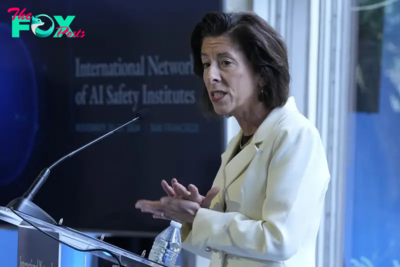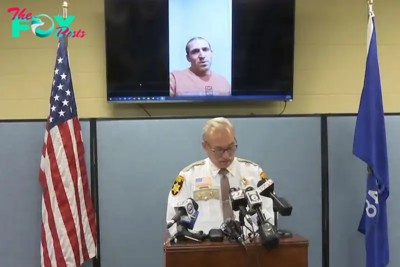US News
The Tale of the Tuskegee Airmen Is Poignantly Told in a New Documentary
Frank Moody was prepared to give up his life over the battlefields of Europe. What he didn’t bargain for was giving up his life over Lake Huron, off the coast of Michigan. But on April 11, 1944, that’s what happened when Moody, a Black Tuskegee Airman, was flying a training run with three other pilots in his P-39 fighter and his plane suddenly augured in, crashing into the deep Huron waters. Fifty-four days later, his body washed ashore, but it was not until 70 years to the day after the crash—on April 11, 2014—that divers discovered the wreckage of the plane.
The cause of the accident that claimed the young lieutenant was always a mystery. Ten years of salvage work and accident forensics, however, finally pinpointed the cause as a breakdown in the forward machine guns’ interruptor—a timing device that pauses the firing of the bullets in the fraction of a second when the propeller is spinning in front of the gun barrel. In the case of Moody’s plane, holes in the propeller proved that the interruptor failed, dooming him to a tragic end before he ever left to fight for his country.
Many other Black men made that journey and braved that fighting. From 1941 to 1946, close to 1,000 African American pilots were trained as Tuskegee airmen, back in the days before Jan. 26, 1948, when Pres. Harry Truman signed Executive Order 9981, desegregating the American armed forces. Now, Moody’s story, and that of the Tuskegee airmen as a whole, are being told in a National Geographic special, The Real Red Tails, which premiered May 31. Told with archival films, Lake Huron dive footage, and interviews with surviving airmen, the special is equal parts tribute, tone poem, and historical object lesson—one that tells the tale of what the airmen called their Double-V campaign: victory over facism abroad and victory over racism at home.
“I tried to enlist in the Army Air Corps, and they didn’t want me. I had to be drafted,” retired Lt. Col. James Harvey, who will turn 101 in July, told TIME. “The commanding general of the Air Force did not want us in his Air Corps.”
What the commander wanted and the country needed were two different things, however, and with the U.S. mobilizing for a massive, two-front war, the military could not afford to sideline the 9.8% of the population that was Black. Still, there were massive hurdles to overcome, beyond the officially sanctioned segregation of the armed forces. As the film shows, a 1925 document on the suitability of Blacks for military service was awful and unsparing in its racism.
“He is,” read the ostensibly learned analysis of African American males, “by nature subservient [and] mentally inferior.” He is “susceptible to crowd psychology,” “cannot control himself in the face of danger,” and does not have “the initiative, courage, and resourcefulness of the white man.”
It was Pres. Franklin Roosevelt who started the first Black fighter squadron, the 99th pursuit squadron, in January of 1941, in part as a bid for the Black vote in the 1944 election. It didn’t hurt either Roosevelt’s or Black Americans’ cause that First Lady Eleanor Roosevelt famously Traveled to Tuskegee to be photographed in a plane with an African American airman.
Still, the fight was uphill for the men of the 99th. Harvey recalls that even after establishing himself as a qualified pilot, he had to practice twice in a training plane just to prove he could fly, while white servicemen were not made to jump through that same hoop. His white wing coMMAnder once asked him what he wanted to be called, and Harvey looked at the man with stupefaction. “I said, ‘I’m a first lieutenant, so how about Lieutenant Harvey?’” he told TIME.
In the documentary, Harvey also recalls training on the Tuskegee military base, which he describes as “a Jim Crow base in a Jim Crow city.” When he went into town one day, the sheriff made it clear just how welcome his presence was, telling him, “If I find you back in town I’ll blow your brains out.”
Still, Harvey flew and fought bravely for his country. He was at the dock preparing to ship out overseas when word came down that the war in Italy had ended and the rest of Europe was likely to follow, so the men of his detachment remained stateside. He did not see combat until the Korean War, when he flew 126 combat sorties in just 89 days, earning the Distinguished Flying Cross and numerous Air Medals. He came close to losing his life like Moody, during one mission when he was peeling off at a nearly vertical angle after strafing a town and a burst of anti-aircraft fire caught the fuel tank on the tip of his wing.
“My wing man said he saw this big ball of fire about the size of a basketball hit my tank,” he says. “Lucky for me I was turning, or I wouldn’t be here today.”
But he is here today, and that is a gift to History. Ultimately, Harvey served 22 years in the Military before retiring to work for the Oscar Mayer company. That, however, was not his first choice. He originally interviewed to be a commercial airline pilot, but was told that the company had an age cutoff of 35, and he was 42.
“I said OK, if that’s their policy, that’s their policy,” he says. As it turned out, it wasn’t their policy. Sixteen years later he spoke to a white pilot who was hired by the same airline at about the same time and was also over 35.
“The light went on,” Harvey says. “They didn’t want passengers to get in the aircraft, gaze in the cockpit, and see a person of color behind the controls.”
Given his druthers, Harvey would still be at the controls. The Real Red Tails ends with him and another very elderly airman walking out of a hangar, shot from behind, laughing about the fact that they would take a nearby Cessna up today if they could. They can’t, of course. But while they may have flown their last, they have not spoken their last. The story they tell in the new documentary is one of a nation slowly, haltingly, imperfectly getting right with itself and its History—and honoring a thousand of its heroes in the process.
-

 US News1d ago
US News1d agoHow TIME and Statista Determined the Best Companies and Colleges for Future Leaders for 2025
-

 US News1d ago
US News1d agoWorld’s Best Brands – United States
-

 US News2d ago
US News2d agoFlorida Man Arrested and Charged With Planning to Bomb the New York Stock Exchange
-

 US News2d ago
US News2d agoU.S. Gathers Global Group to Tackle AI Safety Amid Growing National Security Concerns
-

 US News2d ago
US News2d agoTexas Offers Trump Land on U.S.-Mexico Border for Potential Mass Deportations
-

 US News2d ago
US News2d ago4B Is Not the Winning Strategy to Resist the Patriarchy People Think It Is
-

 US News2d ago
US News2d ago‘Bomb Cyclone’ Threatens Northern California and Pacific Northwest
-

 US News3d ago
US News3d agoClimate Action in Trump 2.0

















